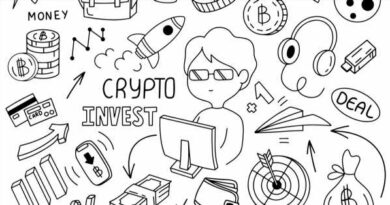From Margin To Perpetuals: How Decentralized Exchanges Are Redefining DeFi Trading
The decentralized finance (DeFi) space has been gaining tremendous traction over the last months, especially in the area of perpetual trading. The on-chain perpetual exchange sector has seen significant growth recently, with a total trading volume of $164.2 billion in Q1 2023.
According to the DeFi researcher and analyst, Thor Hartvigsen, the on-chain perpetual exchange sector is poised for significant growth in the coming years, with projections of 10-20x growth. This growth is driven by the emergence of new protocols and the increasing number of traders moving on-chain, especially after the collapse of the crypto exchange FTX.
Decentralized Perpetual Exchanges, The Future Of DeFi Trading?
Hartvigsen’s analysis shows that, as the space matures, it is expected that the cumulative on-chain perpetual trading volume will increase to trillions per quarter.
Related Reading: These Top 5 Cryptos Are Thriving Despite A Slippery Market
Several decentralized exchanges such as DYDX, GMX, KWENTA, and GNS have emerged in the on-chain perpetual exchange space, offering unique features such as low fees, increased privacy, and the ability to trade various assets without the need for intermediaries.
For example, dYdX was one of the first on-chain perpetual exchanges to launch in the DeFi space, and it has since gained significant traction. Despite a decrease in trading activity since 2021, dYdX still does more in daily trading volume than all of the other perp protocols combined, with a total trading volume of $913 billion.
The analysis shows that when it comes to on-chain perpetual trading protocols, dYdX operates differently from its counterparts like GMX, gTrade, and Level. dYdX has a low trading-fee structure that is more similar to a centralized exchange (CEX).
Furthermore, dYdX does not charge fees on the first $100,000 traded and allows users to avoid Ethereum gas on all deposits above $500. This low fee structure works to dYdX’s advantage as it attracts more traders to the platform, similar to how CEXs attract traders with their low fees.
On the other hand, GMX is another of the leading on-chain perpetual exchange protocols, with a total trading volume of $100.5 billion and total fees of $148.2 million. Additionally, GMX is getting close to launching V2, which will introduce a new liquidity structure to the protocol, a large number of trading pairs, new asset classes, and much lower fees.
Hartvigsen suggests that the success of GMX last year sparked the on-chain perpetual exchange narrative, with its novel liquidity model (GLP) and real yield distribution of fees to liquidity providers and $GMX stakers playing a significant role.
The Road Ahead For DEXs
Hartvigsen also highlights in his analysis that while the on-chain perpetual exchange sector is expected to grow significantly, it is unlikely that it will overtake centralized exchanges in perpetual trading volume due to CEXs’ larger marketing budgets and ability to onboard retail more easily.
Related Reading: ADA 10% Rally Coincides With Cardano Foundation’s Annual Report
Additionally, regulatory uncertainty remains a significant headwind for the sector, with tokens paid as a yield resembling securities to a significant extent. This could make larger entities from traditional finance more reluctant to invest in these tokens.
Despite these challenges, Hartvigsen believes that the on-chain perpetual exchange sector has significant growth potential. The protocols mentioned above are the ones to watch, but new entrants could also emerge in the future, attracting significant liquidity.
Featured image from Unsplash, chart from TradingView.com
Source: Read Full Article




